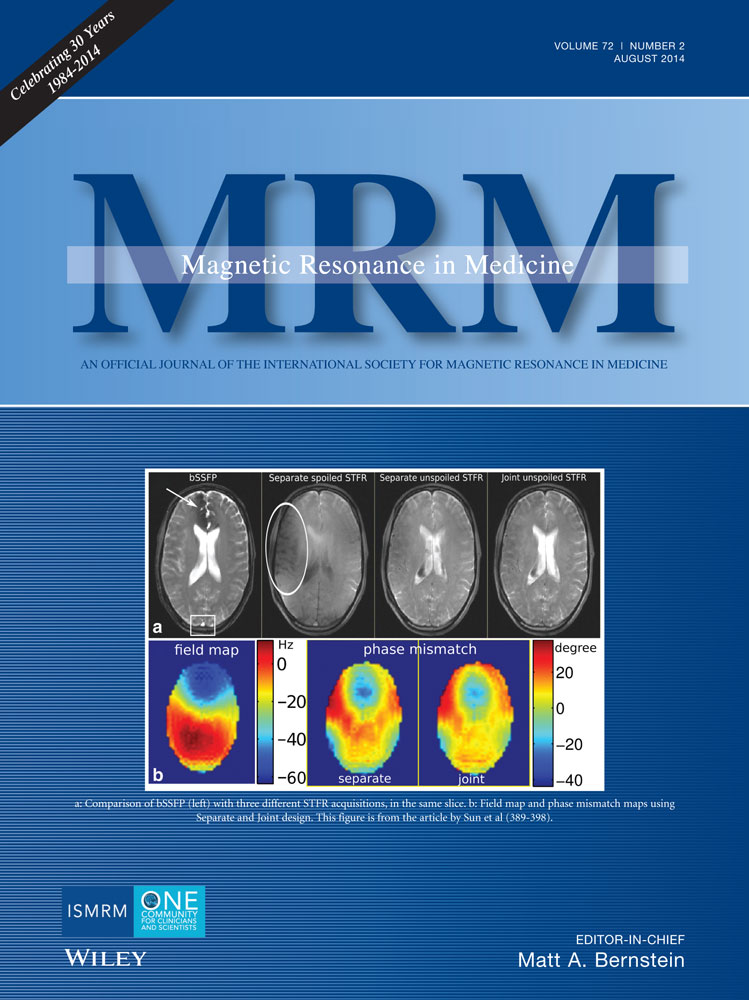Accelerated multi-shot diffusion imaging
Abstract
Purpose
To reduce image distortion in MR diffusion imaging using an accelerated multi-shot method.
Methods
The proposed method exploits the fact that diffusion-encoded data tend to be sparse when represented in the kb-kd space, where kb and kd are the Fourier transform duals of b and d, the b-factor and the diffusion direction, respectively. Aliasing artifacts are displaced toward under-used regions of the kb-kd plane, allowing nonaliased signals to be recovered. A main characteristic of the proposed approach is how thoroughly the navigator information gets used during reconstruction: The phase of navigator images is used for motion correction, while the magnitude of the navigator signal in kb-kd space is used for regularization purposes. As opposed to most acceleration methods based on compressed sensing, the proposed method reduces the number of ky lines needed for each diffusion-encoded image, but not the total number of images required. Consequently, it tends to be most effective at reducing image distortion rather than reducing total scan time.
Results
Results are presented for three volunteers with acceleration factors ranging from 4 to 8, with and without the inclusion of parallel imaging.
Conclusion
An accelerated motion-corrected diffusion imaging method was introduced that achieves good image quality at relatively high acceleration factors. Magn Reson Med 72:324–336, 2014. © 2013 Wiley Periodicals, Inc.




